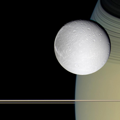DARPA is a wonderful example of an organization designed for innovation and creating value. The Defense Advanced Research Projects Agency (DARPA) is an agency of the United States Department of Defense responsible for the development of new technologies for use by the United States military. DARPA has funded the development of the Global Positioning System (GPS), stealth capability, unmanned vehicles – and where would we be without the ARPANET? You wouldn’t be reading this in all likelihood.
How is DARPA designed for innovation and creating value? Case studies1 of DARPA at the Naval Postgraduate School conclude that wiring innovation directly into the DNA of an organization is a tremendous engine of value. Here are examples of how DARPA is wired to innovate:
- Through its organizational structure – DARPA only has about 100-ish full-time employees organized in a very flat reporting structure
- Through shortened tenure of its project managers – the average length of a project, and hence a project manager at DARPA, is four years
- Through challenges and incentives – DARPA uses a variety of prizes and competitions as incentives to produce results
Contrast that against human spaceflight at NASA. Most of NASA’s current human spaceflight projects and programs are extremely long, crossing the boundaries of multiple Presidential administrations, with large organizational structures spread across the country. I can’t help but wonder if the tendency for such a structure is to exacerbate the inertial effects of an organization – leading it to play it safe and perpetuate the status quo – rather than innovate. DARPA shows that quicker turnover of projects and programs and leaner organizations provide a greater engine for innovation.
In thinking further about how innovation is wired into an organization, I also wonder about innovation efforts that are on the organizational periphery, or are relegated to the “grass-roots.” Does such an approach heighten the likelihood that innovation efforts will be ignored in the daily routine of the big programs and projects? I think so.
As a case in point, I offer Kodak. Although Kodak invested in research and development, it failed to exploit its discoveries such as in digital imaging, partly out of fear of what those new discoveries would mean to its core film business. The failure at Kodak highlights the critical need to figure out how to move forward with innovations while maintaining the core business, and readying those innovations to become the “new” core business.
Think about how such an approach at NASA might revolutionize human spaceflight.
For instance, put an “innovation office” in key organizations as part of the formal organizational structure, reporting to the director of that organization. Give the innovation office access to resources and “grand challenges” from the director to create innovative approaches that drastically reduce cost or greatly improve performance in the products and services of that organization. Each of these challenges could be turned into a short-duration project and run from the innovation office with managers whose tenure lasts for the duration of the project. Recognizing that many, perhaps even most, of the projects will fail is to be expected, even applauded. But for those that succeed, they might displace the old way of doing business, and serve as the engine of new ideas.
It seems to me that wiring innovation into the organizational structure of human spaceflight within NASA is worth a conversation for creating a meaningful, sustainable strategy for human spaceflight.
Next time: The FBI and Transformational Change
Previous entries in this series:
Part 1: The United States Postal Service and the Porter Five Forces
Part 2: Disney and the Resources Based View
1See Dew, Nicholas, “The ‘As’ in DARPA: Advanced or Applied?”
